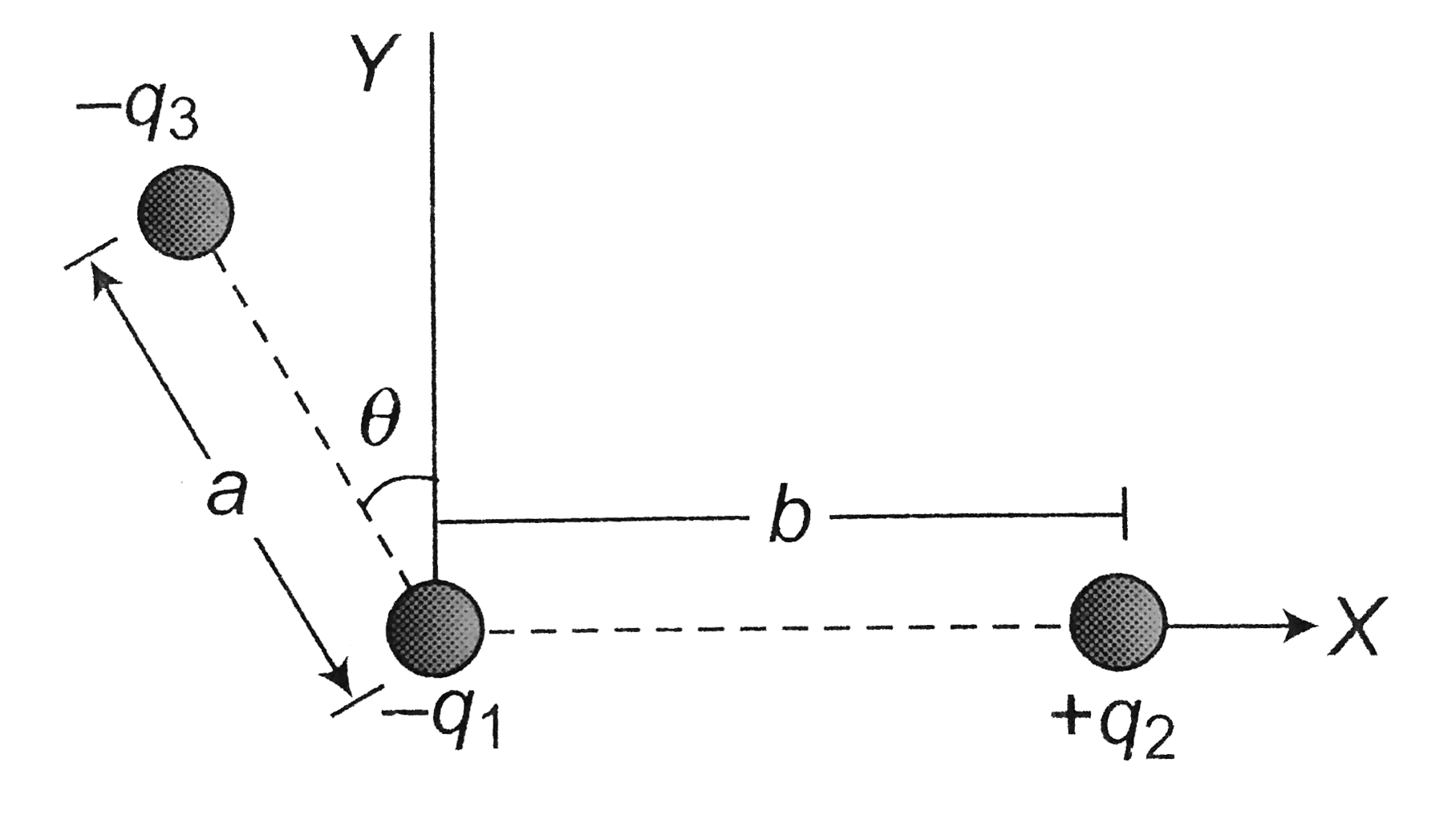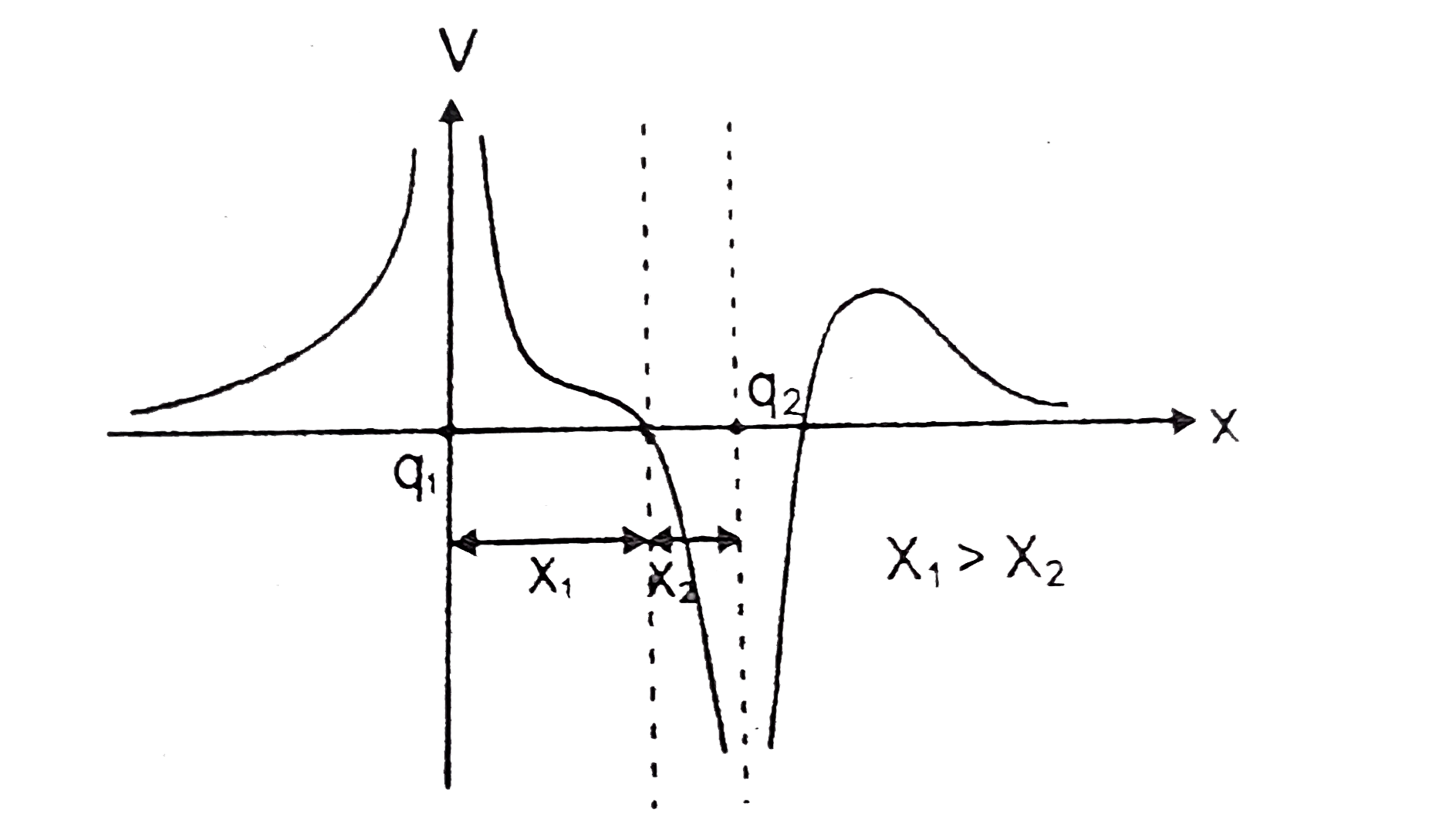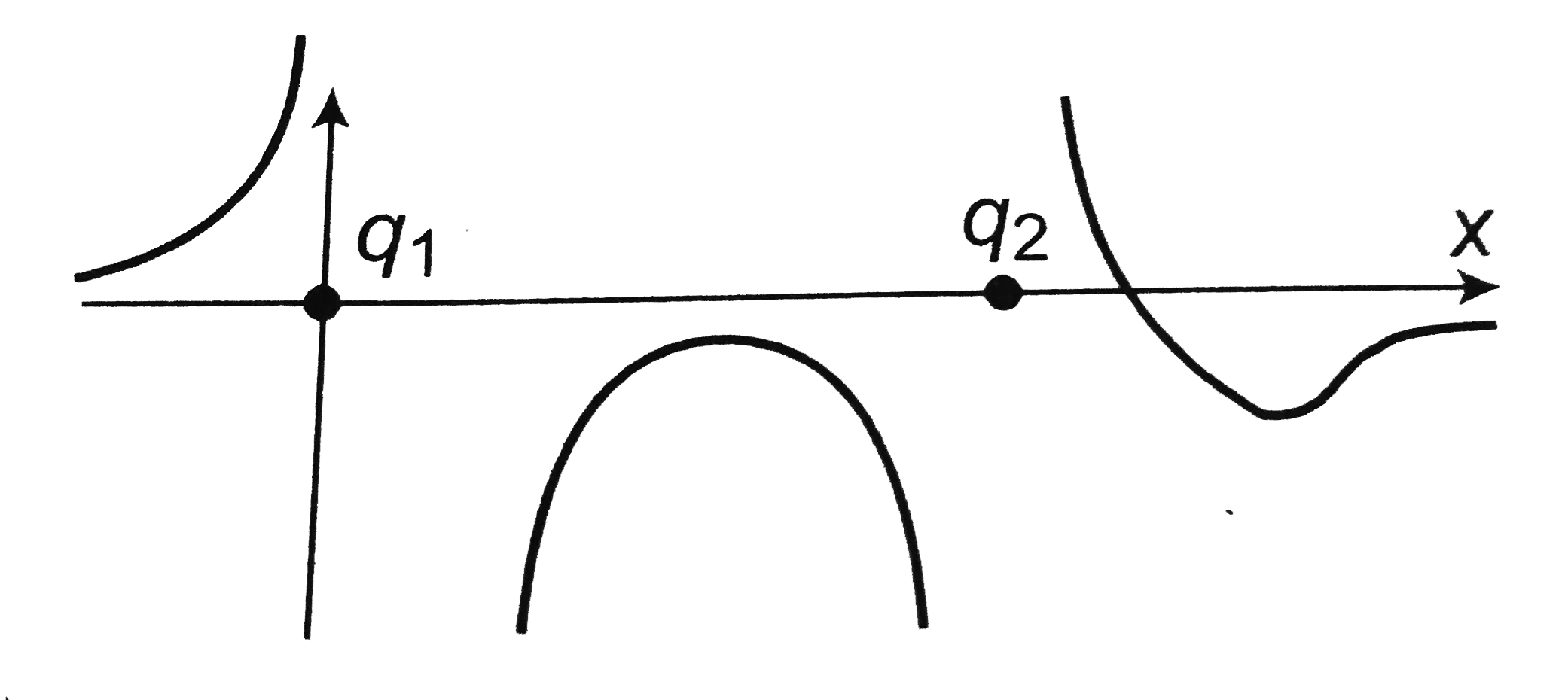Two charges+q1 and −q2 are placed at A and B respectively. A line of force emanates from q1 at an angle α with the line AB. At what angle will it terminate at −q2 ?

We know that number of lines of force emerge is proportional to magnitude of the charge. The field lines emanating from Q1, spread out equally in all directions. The number of field lines or flux through cone of half angle θ is Q14π2π(1−cosθ).
Similarly the number of lines of force terminating on −Q2 at an angle ϕ is Q24π2π(1−cosϕ). The total lines of force emanating from Q1 is equal to the total lines of force terminating on Q2
⇒Q14π2π(1−cosθ)=Q24π2π(1−cosϕ)orQ12(1−cosθ)=Q22(1−cosϕ)
Q1sin2θ/2=Q2sin2ϕ/2
sinϕ/2=√Q1Q2sinθ/2⇒ϕ=2sin−1{√Q1Q2sinθ/2}
Topper's Solved these Questions
- ELECTRIC CHARGES AND FIELDSBOOK - AAKASH SERIESCHAPTER - ELECTRIC CHARGES AND FIELDSEXERCISE - Assess Your Self
13 Videos
- ELECTRIC CHARGES AND FIELDSBOOK - AAKASH SERIESCHAPTER - ELECTRIC CHARGES AND FIELDSEXERCISE - Exercise-I
80 Videos
- DUAL NATURE OF RADIATION AND MATTERBOOK - AAKASH SERIESCHAPTER - DUAL NATURE OF RADIATION AND MATTEREXERCISE - PRACTICE EXERCISEX
42 Videos
- ELECTRIC FIELD AND POTENTIALBOOK - AAKASH SERIESCHAPTER - ELECTRIC FIELD AND POTENTIALEXERCISE - PROBLEMS (LEVEL-II)
26 Videos
Similar Questions
Two charges q1andq2 are placed at (0,0,d) and (0,0,-d) respectively. Find locus of points where the potential is zero.
View SolutionThree charges −q1,+q2 and −q3 are placed as shown in the figure. The x-component of the force on −q1 is proportional to

View SolutionTwo electric charges q1=qandq2=−2q are placed at a distance l = 6a apart. Find the locus of points in the plane of the charges where the field potential is zero
View SolutionThree charged paricles are placed on a straight line as shown in fig. q1 and q2 are fixed but q3 can be moved. Under the action of the forces from q1,q2 and q3 is in equilbrium. What is the relation between q1 and q2.

View SolutionTwo point charges q1=20μC and q2=25μC are placed at (-1, 1, 1) m and (3, 1, -2)m, with respect to a coordinate system. Find the magnitude and unit vector along electrostatic force on q2 ?
View SolutionA charge Q located at a point →r is in equilibrium under the combined field of three charges q1,q2 and q3. If the charges q1 and q2 are located at point →r1 and →r2 respectively, find the direction of the force on Q due to q3 in terms of q1,(q2),→r1→r2, and →r.
View SolutionTwo charge Q1=18μC and Q2=−2μC are separated by a distance R, and Q1 is on the left of Q2. The distance of the point where the net electric field is zero is
View Solution
Two point charges (q1 and q2) are placed on x-axis, figure shows graph potential (V) on x-axis. With x-co-ordinate:
View SolutionThe positions of two point charges q1 and q2 are →r1 and →r2 , respectively. Find the position of the point where the net field is zero due to thses charges.
View SolutionTwo charges q1 and q2 are kept on x-axis and electric field at different points an x-axis is plotted against x. Choose correct statement about nature and magnitudes of q1 and q2

View Solution
